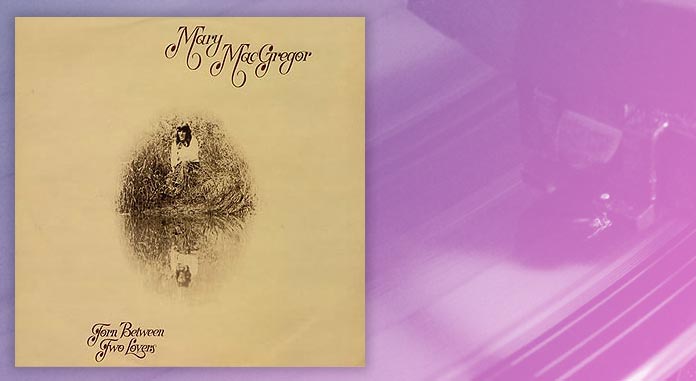Waxing Nostalgic Connecting The Dots: Mary MacGregor, “Torn Between Two Lovers”
Published on October 2nd, 2013 in: Music, Waxing Nostalgic |1976 was the year of America’s 200th birthday. We walked smugly around our little town in ugly red, white, and blue shirts. We shot off fireworks while Europe rolled its eyes and told us to stay the hell of its lawn. Jingoism, patriotism, and parades were the order of the summer. Eagles and sno-cones, commemorative quarters and flags, colors that refused to run. We picnicked under the shadow of thousands of unseen missiles, our thin windbreakers and bravado enough to shield us from the chill of the Cold War.
As fall crept in and the charcoal grill fires slowly died, something insidious began to snake its way through the country. I see it now as a virus, its simplicity masking its evil intent. By the time winter rolled around, we were all infected. We wouldn’t be the same for years.
You know what 45s were, right? They were like full-length vinyl records, except they were singles. One song per side, and they had to played at a faster speed then LP’s, for reasons that I don’t know enough science to fully comprehend. The first 45 I ever bought was Mary MacGregor’s “Torn Between Two Lovers.” I was seven years old.
We didn’t give it much thought at first. It was just a little song on the radio. It was soft and repetitive, a dry hump of a tune, nothing to be concerned about. The singer practically whispered the melody. Maybe that was part of the appeal; she was telling us a secret, an embarrassing one, at that. We all want to hear those kinds of confessions.
By the beginning of 1977, the song was in the Top Five on six separate charts in two different countries (yes, Canada, even you). Every radio station played it. No one seemed to be able to get enough of it. It was airborne heroin.
Ask yourself: why would a seven-year-old boy give a shit about a woman who couldn’t decide who she was in love with? The hardest decision I had to make was which cereal I was going to eat while watching cartoons. I could not identify with the problem at hand. Yet there I was, with my saved-up change, buying this song. Was it hypnosis? Brainwashing? Some kind of song parasite wrapped around my cerebral cortex?
How did we, as a people, get to the place where we were ready for Mary MacGregor? She was not what you would consider beautiful, on stage in her Holly Hobbie skirt, barely swaying to the music, looking more afraid than anything else. She was a scarecrow of a girl, a musical version of Carrie White.
Our attraction to her was not necessarily physical. She was the representation of millions of adults, caught up in the whirlwind of the sexual revolution of the Seventies. She was the victim of too many suburban orgies, too many nights of drawing strange keys out of oversized brandy snifters. She spoke to wives who had been swapped, either willingly or reluctantly. She expressed the secret fears of men who haunted the bars and dance clubs, the ones who claimed to be just looking for a good time, without admitting there was a toll being taken, a price to be paid.
History will record that the AIDS crisis ended the sexual revolution. The revolution really ended, from an emotional standpoint at least, because we could not guard our tender hearts, no matter how hard we tried. In the end, our feelings betrayed us, and we found our own ways to instill the simple act of copulation with meaning. We paired off and tripled out, married and mated, just as the generations before us had done. Our emotions were the final battleground, and we conceded, with Mary MacGregor waving the white flag.
I carried that little record into my room like a pod, right off the truck from Santa Mira. I, like everyone else around me, listened to that song over and over. There are no key changes. The music rarely shifts. It has the same artless repetition as a lullaby. Maybe that’s what makes it so effective; it drifts in like a ghost, full of fear and indecision, and leaves you with no real resolution.
Uncertainty. Confusion. Potential abandonment.
Even a seven-year-old boy can understand those things.

Time limit is exhausted. Please reload the CAPTCHA.